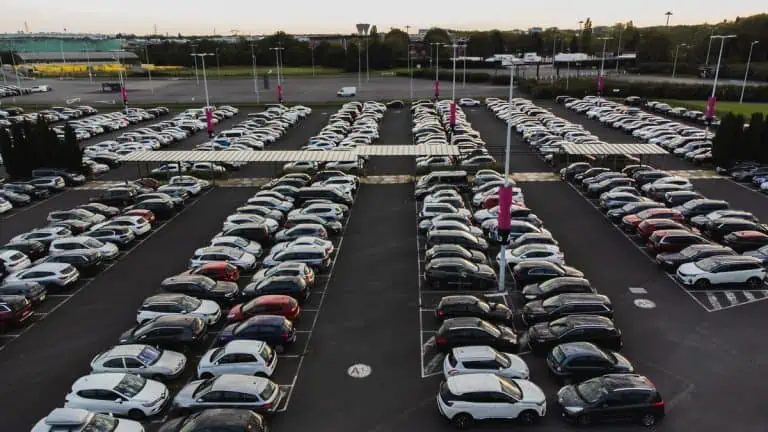Traffic in car parks: regulations and best practices to be aware of
Moving around and parking in a car park require special care and compliance with specific rules that many motorists underestimate. Whether you use a public, private or dedicated car park such as a Class'Park located just a few minutes from Roissy-Charles de Gaulle airportKnowing these regulations is essential to ensure everyone's safety and avoid inconvenience. Find out in this article about the essential principles governing traffic in these shared spaces, and how they apply, particularly in an airport context.
Responsible behaviour and safety in car parks
Safety in a car park depends above all on adopting appropriate behaviour and complying with rules that are often inspired by the highway code, but with specific features that are unique to these particular environments.
Shared vigilance and anticipation at the wheel
Driving in a car park requires constant vigilance in the face of the many movements taking place simultaneously. Unlike on the road, movements are less predictable: a pedestrian may jump out between two vehicles, a car may suddenly move backwards to leave its space, or a luggage trolley may cross an aisle. This reality is particularly marked in car parks close to airports, such as Class'Park at Roissy, where passengers, sometimes in a hurry to catch a flight, can behave rashly. This is where anticipation becomes the driver's best ally: constantly scanning your surroundings, identifying high-risk areas and adapting your speed accordingly helps to avoid the majority of incidents. Blind spots are a particular danger in these confined spaces, which is why it is so important to carry out thorough visual checks before every manoeuvre, however small.
Observing speed limits and adapting to conditions
Excessive speed is one of the main causes of accidents in car parks, although the consequences are generally less serious than on open roads. Speed limits, which are usually set at between 10 and 20 km/h depending on the facility, are calibrated to allow drivers to stop almost immediately in the event of an unforeseen event. This moderation is not an arbitrary constraint but an absolute necessity in an environment where visibility is often reduced by parked vehicles, poles or walls. Over and above the official speed limit, the responsible driver adapts his or her speed to the specific conditions: reducing the pace even further in areas with a high pedestrian density, in rainy weather when the ground becomes slippery, or in narrow passages where passing another vehicle requires greater precision.
Priorities and signs: non-negotiable rules
Contrary to popular belief, the rules of priority do not disappear at the entrance to a car park. In the absence of specific signage, priority to the right applies, as in any traffic lane. Modern car parks generally have comprehensive signage (stop signs, yield signs, one-way streets) to structure movements and prevent conflict. These signs are not just suggestions, but legal obligations, failure to comply with which may render the driver liable in the event of an accident. The special feature private car parks with a shuttle service, such as Class'Park near Roissy airportThe key to the airport's success lies in the organisation of specific areas for boarding and disembarking passengers. These areas are subject to reinforced signage and sometimes distinctive ground markings, which must be scrupulously respected to ensure smooth transfers to and from the airport.

Organisation and specific features of the different types of car parks
The configuration and use of car parks directly influence the rules that apply to them, with significant variations depending on whether the car park is temporary, long-term or specialised, such as those for air travellers.
Parking and respecting designated spaces
Respecting parking spaces is a fundamental rule in any car park, with implications for both safety and collective comfort. Each space is designed to accommodate a vehicle in optimum conditions, leaving enough room for doors to open and for traffic to flow around. Parking outside these limits could potentially block access to other spaces or impede the flow of traffic. In a private car park like Class'Park, This discipline is all the more important as optimising the use of space ensures that the service remains available, even during busy periods. Special spaces, in particular those reserved for people with reduced mobility, families or electric vehicles, meet particular needs and their improper use not only constitutes incivility but may also, in certain cases, be punished. Particular attention must also be paid to areas reserved for shuttle bus stops, such as those operated by Class'Park between its site and Roissy airport, where even temporary parking is generally prohibited to ensure the smooth running of the shuttle service.
Long-term car parks and associated services
Car parks dedicated to long-term parking, such as Class'Park near Roissy airport, have specific characteristics that influence the traffic regulations that apply to them. Designed to accommodate vehicles for extended periods (from a few days to several weeks), they generally give priority to the safety and protection of parked cars. This is reflected in the way entry and exit flows are organised, often with buffer zones for vehicle registration and reservation checks. Traffic flow is designed to limit crossings and ensure a smooth transition between the various stages: from arriving at the site to taking the shuttle to the airport. Class'Park has optimised this experience by creating dedicated lanes and clearly identified stops for its free shuttles, reducing waiting times and simplifying orientation for passengers. Luggage management is also a distinctive aspect of these car parks: aisles are generally wider to allow easy handling of suitcases, and temporary drop-off areas are sometimes set up close to boarding points.
Shuttles and transfer areas: a specific organisation
What makes a car park with shuttle service like Class'Park lies in the need to effectively manage the interface between car parking and public transport to the airport. This is achieved by means of specially designed transfer zones, where traffic is subject to specific rules. Shuttle bus stops are strictly regulated, with reserved and signposted spaces that must never be obstructed, even temporarily. These areas are particularly busy with pedestrians at departure times, requiring drivers to be particularly vigilant. Class'Park has developed a system to synchronise the arrival of customers and the departure of shuttles to Roissy.This organisation sometimes involves priority lanes for shuttles, indicated by specific markings, and waiting areas for passengers. This organisation sometimes involves priority lanes for shuttles, indicated by specific markings, and waiting areas for passengers, generally located away from the main traffic lanes to avoid any risk of accidents. The frequency of rotations, adapted to peaks in air traffic, also influences the overall management of traffic flows in the car park, sometimes with temporary changes to the traffic plan at peak times.
Legal responsibilities and special precautions
As well as the practical rules, using a car park also involves legal and insurance considerations that you need to be aware of to avoid unpleasant surprises.
Legal framework and insurance cover
In legal terms, accidents occurring in a car park are generally governed by the same principles as those on the public highway, with liability determined according to the circumstances and the priority rules in force. However, there are a number of special features worth highlighting: the presumed liability of the moving driver in a collision with a parked vehicle, or the complexity of establishing the facts in the absence of witnesses. Insurance companies often have specific clauses relating to accidents while parked, sometimes with different excesses or implications for the no-claims bonus. In this context, secure car parks such as Class'Park has one notable advantage: the presence of video surveillance systems. can make it easier to reconstruct incidents and identify who is at fault. However, these systems do not release drivers from their duty of care, nor from their obligation to draw up an accident report in the event of a collision, even a minor one. It is also important to note that the car park manager may be held liable in the event of a clear lack of maintenance (potholes, defective signs) that has contributed to an accident.
Weather conditions and necessary adaptations
Weather conditions have a significant influence on safety in car parks, sometimes even more so than on conventional roads. Wet, snow-covered or icy surfaces considerably alter grip and braking distances, even at very low speeds. This means that drivers must constantly adapt their behaviour: reduce speed further, increase safety distances and anticipate manoeuvres more carefully. Outdoor car parks are particularly exposed to climatic variations. Drivers are also advised to pay particular attention to their vehicle lighting in these adverse conditions, even during the day, to improve their visibility to other car park users.
Protecting property and securing vehicles
The security of parked vehicles is a major concern for users of long-term car parks, particularly when they leave on a trip and the car is left unattended for several days. Private car parks like Class'Park near Roissy have developed sophisticated protection systems: perimeter fencing, access control, permanent video surveillance and security patrols. These measures do not exempt drivers from taking basic precautions: locking the doors, closing the windows and sunroof, and activating the alarm if the vehicle is so equipped. It is also advisable not to leave any valuables visible in the passenger compartment, even when parking for a short time. Class'Park also offers a visual inspection service for vehicles on arrival, making it possible to document the condition of the car before it is parked and thus avoid any disputes at a later date. This attention to safety also influences internal traffic rules, with access sometimes differentiated according to whether customers are dropping off their vehicles or picking them up, thus limiting flows and facilitating control.
Driving in a car park is far from a trivial act. It requires special attention and compliance with specific rules to ensure the safety of all users. From limiting speed to respecting the right of way and parking in designated spaces, every behaviour contributes to creating a fluid and safe environment. Private car parks with a shuttle service, such as Class'Park near Roissy airport, are a perfect illustration of this need for organisation, with adapted systems to facilitate the transfer of passengers to the terminals while preserving the safety of parked vehicles. As a user, adopting responsible and courteous behaviour in these shared spaces is not only a legal obligation, it is also a guarantee of a peaceful start or end to your journey, without the inconvenience of an accident or damage that could tarnish the overall experience. Choosing a car park like Class'Park means opting for the peace of mind that comes with a complete service, from picking up your vehicle to a quick and comfortable transfer to Roissy airport.







